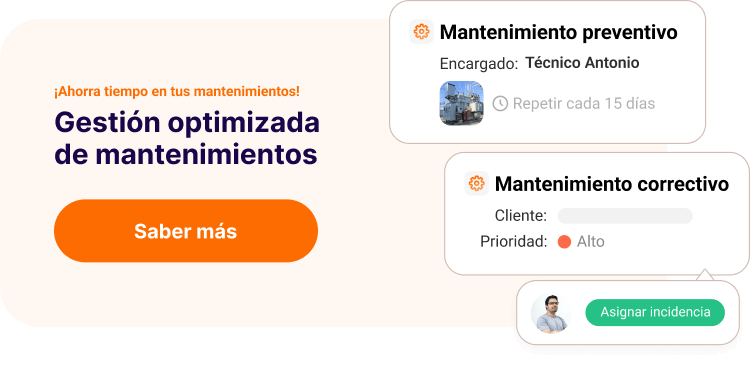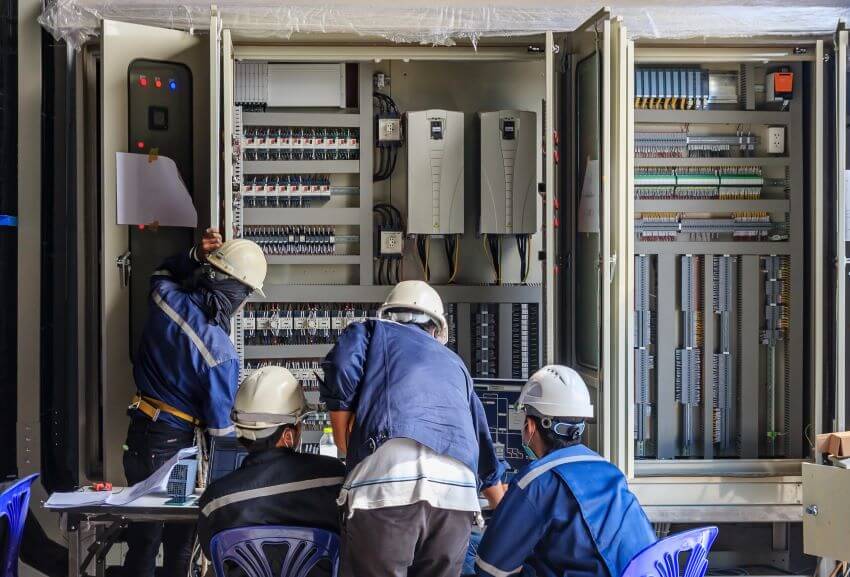Any maintenance technician with a modicum of experience is aware that it will never be possible to completely eliminate all possibilities of asset failure. However, with a proper preventive-maintenance plan, these probabilities are significantly reduced. Therefore, let’s look at what steps we need to take to create a good preventive maintenance plan, with examples illustrating each of the steps.
Five steps to create a preventive maintenance plan
1. Defining objectives and priorities: what do we want to achieve?
It may seem obvious, but the truth is that this point is essential for a successful preventive maintenance plan. The company will have to ask itself some questions beforehand, upon which the subsequent maintenance strategy will be developed.
These questions will raise issues about the preponderance of the economic factor (choosing the cheapest possible maintenance plan), about correcting previous failures that occurred at another point in time (to prevent future replication) or on prioritizing the preservation of critical equipment whose replacement is significantly more expensive, or whose failure would severely penalize the production chain.
By answering these questions correctly, the company will be able to draw up a maintenance plan aimed at achieving the planned objectives. And the truth is that there is no single valid formula, because they could even be all at the same time.
In addition, these questions can vary depending on the financial position of the company: if the company has a liquidity problem, it is logical to hold down preventive maintenance expenses and pull more on corrective actions.
However, in this battery of questions, obviously those assets without the proper functioning of which the company could incur greater losses in the long run will be put on the table.
2. List assets and tasks: what do we need?
In this second phase, the idea is to start by drawing up a asset inventory, i.e., a list of all the equipment and facilities likely to require maintenance work. The result will be a map divided by families of equipment to facilitate its consultation and categorization.
In addition, each piece of equipment in the list will be accompanied by a series of attributes needed to map the maintenance strategy:
- Manufacturer’s recommendations. They comprise the optimal operating conditions defined by the equipment manufacturer, as well as the recommended maintenance tasks and their planning over time.
- Warranty periods. This is the time during which the equipment is covered by the manufacturer’s warranty. Remember that an out-of-warranty repair always entails higher costs. Knowing when the warranty expires for each equipment will help a lot when prioritizing the maintenance on some equipment or others.
- Maintenance history. It covers all checks and repairs prior to the development of the plan. It is necessary to know them in order to know the point in the useful life of the equipment from which to start from.
- Criticality level. It means to categorize the asset according to its importance in the set of equipment and facilities. This discrimination will subsequently help to prioritize maintenance on more critical or expensive equipment, and to relegate the less critical (or more economical) to corrective maintenance actions.
Let’s look at an example asset and task inventory.
- Facility name: Main building.
- Equipment family: Ventilation.
- Active: Fan 1.
- Brand: Brand 1.
- Warranty period: June 2022.
- Manufacturer’s recommendations: two annual reviews (November and May) and monthly reviews during the summer months.
- Last inspection date: November 2021.
- Criticity: Class B.
By collecting all this information and reflecting it within the service desk software itself, the company will have a visual on the entire asset pool, and this will help a lot in building a proper overall maintenance strategy.

3. Prioritize according to resources: which assets are the most important
Once you have all the starting information, and you are clear about the ideal scenario you want to reach, it is time to ground all this data and draw up a short-term action plan, which takes into account the current resources (time and money) and the criticality of the assets (the most expensive, the most important, the ones with a warranty that expires sooner…).
At this stage, in fact, it is a matter of applying common sense: the protocols of action will come out almost naturally after a first sweep on the collected information:
- The equipment of class A (the most critical) will be the first ones on which preventive maintenance actions will fall. Failures in this equipment will have more serious consequences, so it is necessary to reduce their failure probabilities.
- Class B (intermediate criticality) equipment will be the next to be evaluated. While they are not as important as Class A, it is assumed that a malfunction can be potentially hazardous.
- The equipment of class C (low criticality) are the last to be incorporated in the priority list, since their failures do not constitute any potential danger; for this type of equipment corrective maintenance is more advisable than preventive maintenance.
Once the assets have been grouped according to their criticality, a list of tasks according to the difficulty levels of each one. In this way:
- Level 1. Tasks that do not require skilled labor.
- Level 2. Tasks requiring skilled labor.
- Level 3. Tasks whose labor, in addition to being specialized, must have legal certification.
- Level 4. Large-scale repairs requiring skilled labor.
- Level 5. Large-scale repairs involving high risk to personnel.
Standard maintenance contracts usually comprise levels 2 and 3, since level 1 tasks can be performed by the company with its own resources. However, it is advisable to avoid tasks in levels 4 and 5, unless we are talking about an industrial maintenance plan with heavy equipment.
4. Create the KPIs for the plan: how are we going to measure it
At this stage it is about knowing how to measure the success of the maintenance plan: for this, it will be necessary to establish the right Key Performance Indicators (KPIs). Why? Because, otherwise, the company may be convinced that the maintenance plan is paying off, without being aware of costs hidden in plain sight or of hard-to-detect errors that would indicate otherwise.
And, again, it’s time to ask the right questions. Some of the KPIs that are most commonly used to evaluate preventive maintenance performance are:
- Average time between failures
- Total cost of maintenance.
- Proportionate share of critical maintenance with respect to overall maintenance.
- Overall equipment efficiency.
- Overall compliance index
- Return on investment
5. Review and improve the plan: what can we do to refine the plan?
As time goes by, some scenarios may change, the criticality of an asset may alter, or the company’s financial resources may allow more money to be invested in preventive maintenance tasks.
Whatever the case may be, thanks to the data extracted from the defined KPIs, a scenario of evaluation of the preventive maintenance plan that can take place with the periodicity that the company chooses can be elaborated.
In these evaluations, the company will find out about possible errors not noticeable in the short term in the strategy, and will have some room for maneuver to refine the plan for the future. Some typical questions to ask at this stage are:
- Have some assets been over-invested in maintenance, and have others been under-invested?
- Have all preventive maintenance actions been necessary, are there any that could be dispensed with, and are there any new actions that need to be incorporated into the plan?
- Have there been any assets that have underperformed? Has there been any equipment that has not failed during this period?
- Have there been any failures that could have been avoided if preventive action had been taken? Have there been any failures that could not have been predicted a priori?
- Are all assets at the same level of risk as in the previous assessment? Are there any assets whose criticality needs to be reconsidered?
Any preventive maintenance plan has to be meticulously prepared from the beginning, as each piece of information will influence the next step, and so on. STEL Order’s software provides an optimal environment for the technical service to map the status of the company’s assets, in order to have full control over the preventive maintenance actions arising from the plan drawn up.








